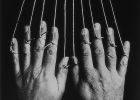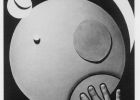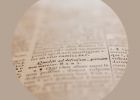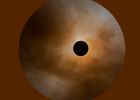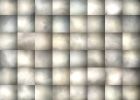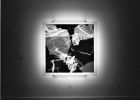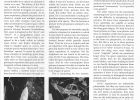Henry Lewis
Henry Lewis (1957) is an Australian artist and photographer. When he was 19, he left Australia for the United States and studied at the San Francisco Art Institute (1977-1980). From there, he and his wife Christiane, decided to move to France. They settled in Forcalquier in the South of the country where they found an abandoned farm house with a huge barn attached. Forcalquier is only an hour from Robion. In 1990, they moved to Tarascon and then to Puy Chenin near Xaintray in the West of France. They now live in Burradoo, near Sydney. Among his numerous personal exhibitions are “Radiographies” at the Galerie Baudoin Lebon in Paris (1989) and “LVNA PROXIMA” at the Center de la Vielle Charité in Marseille (1987). In 1991, he presented his work at the Galerie Baudoin Lebon at ‘Découvertes’, Grand Palais in Paris and the Galerie Porte Avion, in Marseille together with the French painter and sculptor Christiane Thomas under the name Lewis Thomas. His works are in the collections of the Stedlijk Museum (Amsterdam), the National Museum of Modern Art Center George Pompidou (Paris), the Cantini Museum (Marseille) and the Ludwig Museum (Cologne).
Articles of Henry Lewis
135b, The Desperate Hand, from X-rayish Photographs (2025)
The grids in Henry Lewis’ compositions may simply provide a skeleton on which to hang the images. However, they also reference crossword puzzles suggesting a possible meaning and may even initiate the possibility of a narrative. Grids in modern art have come to suggest non-representational spaces devoid of affect. Grids are not the result of imitation, but of aesthetic decree. Grids borrow a flat mathematical or scientific mode and yet behind every grid lurks a symbolist story. Mondrian saw religious connotations in the grid. Agnes Martin spoke of her grids as providing a quiet space for contemplation or meditation. Grids have an affinity with the idea of the horizon and the boundary between material and immaterial domains implying transcendence. A grid is a traditional and effective abstract device but it is also a powerful symbol of something quite explicit. One form of passage that these works specifically invoke is between the conscious domain and the unconscious mind. The grid may also be interpreted as a form of self-portraiture. In Lewis’ grids, there is a shadowy human presence to be made out, the entrapped presence of the artist himself.
Breathing is something all animals have to do to stay alive it is the oxygen we need and in turn the oxygen only exists because plants have preceded us ingesting carbon dioxide, absorbing the carbon to build their bodies and exhaling the oxygen that makes all animal life on earth possible. The biosphere is scarily thin and oxygen is heavy enough to stay there rather than flying off into space. Lewis has noted that the minute particles of matter from water vapour to other bodily traces that constitute the cloud of breath are captured as Photons, a substitution that is part of the indexical nature of photography and particularly at the amazing speeds when the image is caught using flash that exists for a bare 1/20,000 of a second (adapted from Anthony Bond “Of Grids and Indexes” (2024). www.henrylewis.net.au
Brief Encounter with Vilém Flusser. An Interview
In this interview, Henry Lewis, who originally comes from Australia where he now lives again, speaks about his early interest in photography, the years he spent in France and his relationship to Vilém Flusser. His work as a photographer was not only influenced by other photographers like Man Ray – especially the Rayographs -, Tom Dahos, Jürgen Klauke, Juan Fontcuberta, but also by painters and sculptors like Ellsworth Kelly. Lewis got to know Flusser through Andreas Müller-Pohle whom he had showed his radiographic work and who suggested that he made contact with Vilém Flusser in Robion. Lewis and his wife Christiane visited Vilém and Edith Flusser in the South of France several times. Lewis also talks about Flusser’s influence on his work, the relevance of Flusser’s work thirty years after his death, and the future of photography.


